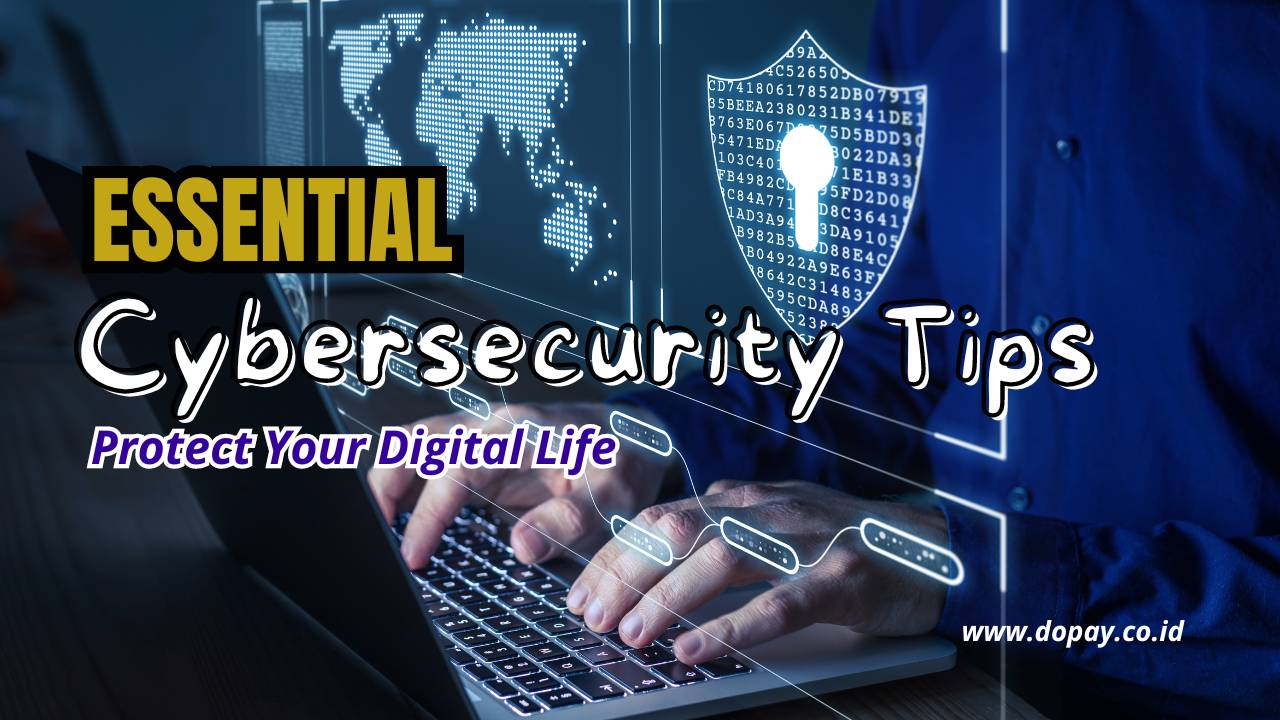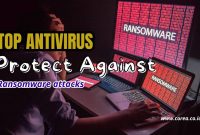The rise of Industry 4.0 has brought about significant advancements in technology, creating a hyper-connected world where everything from our homes to our workplaces is linked through the internet. While this connectivity offers many benefits, it also presents new challenges, particularly in the area of cybersecurity. As we continue to integrate technology into every aspect of our lives, it’s crucial to understand the importance of cybersecurity and how to protect ourselves in this digital age.
In this comprehensive guide, we’ll explore essential cybersecurity tips for the 4.0 era, helping you safeguard your digital life against potential threats. We’ll cover everything from securing your devices to protecting your personal information online, providing you with practical steps to enhance your cybersecurity practices.
Understanding the 4.0 Era
Before diving into specific cybersecurity tips, it’s important to understand what the 4.0 era entails. The term “Industry 4.0” refers to the fourth industrial revolution, characterized by the fusion of physical, digital, and biological worlds. This revolution is driven by advancements in technologies such as the Internet of Things (IoT), artificial intelligence (AI), big data, and cloud computing.
In this era, devices are interconnected, data is continuously generated and shared, and automation is prevalent in industries ranging from manufacturing to healthcare. However, with this increased connectivity comes a greater risk of cyberattacks, making cybersecurity more important than ever.
The Importance of Cybersecurity
Cybersecurity refers to the practice of protecting systems, networks, and data from digital attacks. These attacks can lead to data breaches, identity theft, financial loss, and even disruption of essential services. As technology continues to evolve, cybercriminals are also becoming more sophisticated, using advanced methods to exploit vulnerabilities.
In the 4.0 era, where everything from smart homes to industrial machines is connected, the potential impact of a cyberattack can be devastating. Therefore, understanding the importance of cybersecurity and implementing effective measures is crucial to protecting your personal and professional life.
Securing Your Devices
Your devices, including smartphones, laptops, tablets, and smart home gadgets, are the gateways to your digital life. Ensuring that these devices are secure is the first step in protecting yourself from cyber threats.
1. Keep Software Up to Date: Regularly updating your device’s software is one of the simplest yet most effective ways to enhance security. Updates often include patches for security vulnerabilities that hackers could exploit.
2. Use Strong, Unique Passwords: A strong password is your first line of defense against unauthorized access. Use a combination of letters, numbers, and symbols, and avoid using easily guessable information like your birthdate. Additionally, use different passwords for different accounts to minimize the risk if one password is compromised.
3. Enable Two-Factor Authentication (2FA): Two-factor authentication adds an extra layer of security by requiring a second form of verification, such as a code sent to your phone, in addition to your password. This makes it more difficult for attackers to gain access to your accounts.
4. Install Antivirus Software: Antivirus software helps detect and remove malware from your devices. Ensure that your antivirus software is regularly updated to protect against the latest threats.
5. Encrypt Your Data: Encryption converts your data into a code that can only be accessed with the correct key. This is particularly important for sensitive information such as financial records or personal documents. Most modern devices offer built-in encryption features that you can enable in the settings.
Protecting Your Personal Information Online
Your personal information is valuable, and cybercriminals are constantly looking for ways to steal it. Protecting your information online is essential to prevent identity theft and other forms of fraud.
1. Be Cautious with Public Wi-Fi: Public Wi-Fi networks are often less secure, making it easier for hackers to intercept your data. Avoid accessing sensitive information, such as online banking, when connected to public Wi-Fi. If you must use public Wi-Fi, consider using a virtual private network (VPN) to encrypt your connection.
2. Limit the Information You Share: Be mindful of the information you share online, especially on social media. Avoid sharing details like your full address, phone number, or financial information, as this can be used by cybercriminals to steal your identity.
3. Monitor Your Accounts Regularly: Regularly check your bank and credit card statements for any unauthorized transactions. If you notice anything suspicious, report it to your financial institution immediately.
4. Use Secure Payment Methods: When making online purchases, use secure payment methods such as credit cards or payment platforms like PayPal. These methods offer additional protection against fraud compared to direct bank transfers.
5. Beware of Phishing Scams: Phishing is a common cyberattack where attackers trick you into providing sensitive information by pretending to be a trustworthy entity, such as a bank or a government agency. Always verify the authenticity of emails or messages before clicking on any links or providing personal information.
Safe Browsing Habits
Your browsing habits can significantly impact your cybersecurity. Adopting safe browsing practices can help you avoid malware, phishing attempts, and other online threats.
1. Use a Secure Browser: Ensure that your browser is up to date and has security features enabled, such as pop-up blockers and anti-phishing protection. Consider using a privacy-focused browser like Firefox or Brave, which offer enhanced security features.
2. Check Website Security: Before entering any personal information on a website, check if the site is secure by looking for a padlock icon in the address bar and ensuring the URL begins with “https://”. This indicates that the site uses encryption to protect your data.
3. Avoid Clicking on Suspicious Links: Be cautious when clicking on links in emails, messages, or websites, especially if they seem out of place or come from unknown sources. Hover over the link to see the URL before clicking, and if something seems off, avoid it.
4. Clear Your Browser History and Cache: Regularly clearing your browser history and cache can help protect your privacy by removing stored data that could be exploited by cybercriminals.
5. Use Ad Blockers: Ad blockers can prevent malicious ads from appearing on websites you visit. These ads can sometimes contain malware or redirect you to phishing sites, so using an ad blocker adds an extra layer of security.
Securing Your Home Network
Your home network is the foundation of your digital life, connecting all your devices to the internet. Securing your home network is essential to prevent unauthorized access and protect your personal information.
1. Change Default Router Settings: Many routers come with default usernames and passwords that are easy for hackers to guess. Change these settings to something more secure to protect your network.
2. Enable Network Encryption: Ensure that your Wi-Fi network is encrypted using WPA3, the latest and most secure encryption standard. This prevents unauthorized users from accessing your network.
3. Set Up a Guest Network: If you frequently have visitors who need to use your Wi-Fi, consider setting up a separate guest network. This keeps your main network more secure by limiting access to your personal devices.
4. Disable Remote Management: Most routers offer remote management features that allow you to access your router’s settings from anywhere. If you don’t need this feature, it’s best to disable it to reduce the risk of unauthorized access.
5. Regularly Update Your Router Firmware: Router manufacturers frequently release firmware updates that address security vulnerabilities. Check for updates regularly and install them to keep your network secure.
Safeguarding Your IoT Devices
The Internet of Things (IoT) refers to the network of connected devices that communicate with each other, such as smart home appliances, wearables, and security cameras. While these devices offer convenience, they can also be vulnerable to cyberattacks if not properly secured.
1. Change Default Credentials: As with routers, IoT devices often come with default usernames and passwords that should be changed immediately to something more secure.
2. Regularly Update Device Firmware: Manufacturers frequently release firmware updates for IoT devices to fix security issues. Ensure that your devices are set to update automatically or check for updates regularly.
3. Disable Unnecessary Features: Many IoT devices come with features that you may not need, such as remote access or voice control. Disabling these features can reduce the risk of cyberattacks.
4. Isolate IoT Devices on a Separate Network: If possible, set up a separate network for your IoT devices. This can prevent attackers from gaining access to your main network if one of your IoT devices is compromised.
5. Monitor Your IoT Devices: Keep an eye on your IoT devices for any unusual behavior, such as unexpected data usage or device malfunctions. This could be a sign that your device has been compromised.
Protecting Your Business in the 4.0 Era
Businesses in the 4.0 era face unique cybersecurity challenges due to the increased reliance on technology and data. Implementing strong cybersecurity measures is essential to protect your business from cyber threats.
1. Educate Employees: Cybersecurity is a shared responsibility. Ensure that your employees are aware of the risks and trained in best practices, such as recognizing phishing emails and using secure passwords.
2. Implement Access Controls: Limit access to sensitive data and systems to only those employees who need it for their work. This reduces the risk of data

